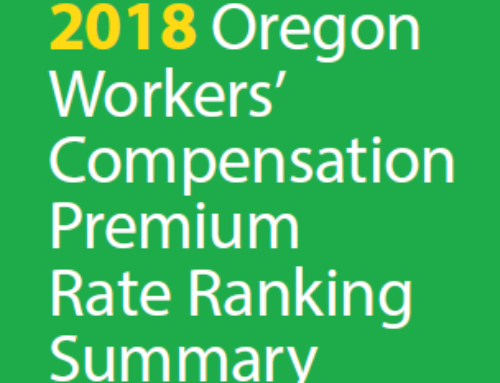In April of 2016, the Workers’ Compensation Research Institute (WCRI) published a study entitled Physician Dispensing of Higher-Priced Drug Strengths and Formulation. While WCRI maintains that it is “nonpolitical,” this new “study” discussed the emergence of new medications in four states where legislative initiatives were underway to plug this “loophole.” The claimed “loophole” was the emergence of new strength dosages being sold directly by the manufacturers of the dosages to doctors without the benefit of middlemen (repackagers). Since the manufacturer was selling directly to the physician, the price to be paid by the insurance company was the “original manufacturer” price in accordance with the recently enacted law of each state. However, in most cases, the new strength medicines had an original manufacturer’s price substantially more than the old dosage strengths of the same medicine. Notably, WCRI comes to no conclusion about the efficacy of the new medicines and, in almost all cases, the medicines were available before the passage of the state’s pricing law and the medicines were also available at pharmacies although not frequently dispensed there.
Given WCRI’s track record, PRI remains suspicious of the conclusions of this study and knows that the timing of the report was not coincidental given the schedules in the Tennessee and Illinois legislatures. Nevertheless, PRI believes this is an issue worth further discussion.
November 17, 2016 Update:
After reviewing the available information PRI has come to the conclusion that the WCRI Study is, in the main, correct. PRI believes that the proper way to deal with this issue is to construct legislation which is tailored to eradicate the abuse but, at the same time, preserve the benefits of physician dispensing of medicines. Dr. David Fletcher’s article in workcompcentral is reproduced below and PRI fully endorses Dr. Fletcher’s solution.
workcompcentral – October 26, 2016
Another Look at Physician Dispensing
by Dr. David Fletcher, State of Illinois
Editor’s note: Physician dispensing for workers‘ compensation patients has received close scrutiny in the past several years. This past week, Dr. David Fletcher spoke at the Illinois State Chamber of Commerce 9th annual Workers’ Compensation Symposium at the Lisle Hilton about the issue of physician dispensing programs from the point of view of a practicing physician, who ethically dispenses prescription drugs to injured workers.
There is some movement to outright ban this practice. House Bill 5751 filed in February 2016 by Rep. Jeanne Ives (A-Wheaton) aims to amend to the Workers’ Compensation Act that no medical provider shall be reimbursed for a supply of prescriptions filled outside of a licensed pharmacy except when there exists no licensed pharmacy within 5 miles of the prescribing physician’s practice. Liberty Mutual petitioned the IWCC Medical Fee Advisory Board on Sept. 12 to end the practice of physician dispensing beyond one week after the initial visit.
I believe a ban or restrictions on physician dispensing would spell disaster for Illinois injured workers because a ban would eliminate the tremendous benefits to those who receive medication at the point of care to ensure compliance. Such a ban would delay necessary treatment and would lead to more cost. Physician dispensing allows for better patient compliance with the treatment plan because necessary medication is given to the patient 100% of the time (unlike going to the pharmacy where there is a 30% no-fill rate due to various insurance-related hurdles or other hassles).
Work comp is not like regular health care. Filling prescriptions is far more difficult. Injured workers do not have a “workers’ compensation” insurance card and, therefore, do not readily have access to employer insurance carrier information. Without a claim number and approval from the carrier, often, a pharmacy will not fill an injured worker’s prescription, which can take days. In many cases, especially when pharmaceutical delays are present, the patient does not follow up in order to fill a prescription, which, a lot of the time, is due to unreliable patient transportation issues of this type of delay, resulting in patient harm and protracted costs.
It needs to be pointed out that physicians do not set the price of medications they dispense (with the exception of compounding drugs, which are not subject to a fee schedule and is a separate issue). In November 2012, Illinois changed the reimbursement rules to set the prices for physician-dispensed prescription drugs to the average wholesale price (AWP) of the original drug used in the repackaging process and explicitly require that dispensing physicians provide the National Drug Code (NOC) of the underlying drug. Maximum reimbursement for drugs dispensed outside of a licensed pharmacy is AWP, plus $4.18 dispensing fee.
There is research that supports the benefits of MD dispensing driven by physician and patient perceptions of convenience and cost reductions along with enhanced patient adherence to treatment. Future dispensing is likely to increase due to consumers’ satisfaction with the point-of-care delivery practice that avoids a separate trip to a pharmacy. Consumer self-reported adverse drug reactions (ADRs) were equivalent between pharmacist- and physician-dispensed drugs, but urgent and emergency clinic ADR consultations were slightly lower with physician dispensing.
Despite the convenience and increased patient adherence to treatment with physician-dispensed drugs, opposition to MD dispensing has been driven by some research studies on physician practices with similar incentives, such as self-referral for lab tests or imaging, has found that incentives inherent in self-referral leads to over-utilization. The Workers Compensation Research Institute (WCRI) has provided several studies on physician dispensing, including the recently published July 2016 WCRI study “Monitoring Illinois Reforms on Physician Dispensing” ( Editor’s note Dr. Fletcher was a peer reviewer on this study).
According to WCRI (which roughly analyzes half of the WC claims in Illinois focusing on those with more than seven days’ lost time), physicians dispensed 42% of all prescriptions in the first quarter of 2014, a drop from 52% in the pre-reform third quarter of 2012. Despite the decreased frequency of physician dispensing, physicians’ cost share increased slightly from 57% in third quarter 2012 to 61% in second quarter 2014. This appears to have been driven by the significant increase in the price per pill for physician-dispensed prescriptions because of the emergence of three new different strength products (150-milligram tramadol extended release, 2.5/325-milligram hydrocodone acetaminophen and 7.5-milligram cyclobenzaprine HCL) that skirt the reforms put in place in November 2012.
According to the July 2016 WCRI study, dispensed prescriptions for cyclobenzaprine HCL,hydrocodone-acetaminophen and tramadol extended release represented 26% of all physician dispensed prescriptions, and increased substantially after the 2012 reform due to more frequent physician dispensing of higher-priced new strengths. These new strengths were not seen among pharmacy-dispensed prescriptions
Ten-milligram cyclobenzaprine HCL (a muscle relaxer with a brand name of Flexeril, commonly prescribed at 10-milligram dose strength that accounted for 95% of all cyclobenzaprine dispensed scripts prior to reform) was a $1.72 per pill before the 2012 reform. After the reform it was $1.25 per pill. Yet with the emergence of a new dose strength of cyclobenzaprine at 7.5 milligrams, for which physicians were reimbursed $3.86 per pill, the number of prescriptions dispensed at the new dose rose to 22% of scripts dispensed, and 1a-milligram strength cyclobenzaprine scripts dropped to 65% of physician dispensed.
However, not all physicians are motivated by financial incentive. As WCRI pointed out in July
2016, “Evidence in the data suggests that some physicians dispensed drugs and were paid prices that were similar or lower than those paid to pharmacies. This implies not all physician dispensers are motivated by the financial incentives embedded in the higher prices of physician-dispensed drugs.
Some of them may dispense drugs for the convenience of the patients.”
SafeWorks has 13 generic drugs in our inventory that represent 85% of the prescriptions that we write or fill for injured workers. We don’t prescribe the new dosages. There is no clinical reason for a physician to prescribe these new dosages other than to make more money. We maintain a close relationship with the patient, and we require narcotic contracts and enforce these narcotic contracts, which help curb substance abuse and diversion.
As opposed to attacking the entire physician-dispensing system, specific attention needs to be focused on exposing physicians who have transitioned to the new drug formulations (Ultram ER 150 milligrams, HG 2.5 milligrams, etc.) for the specific purpose of being able to price-gouge.
I have urged the Illinois State Medical Society take a leadership role in changing physicians.
Utilization review of using these new strengths can help change physician behavior, as well as the new capability of the Illinois prescription monitoring program (PMP) that can track physicians who prescribe these higher-priced new dosages for profit motive. This new way to monitor physician prescribing behavior that includes the ability to do peer reviews will help change behavior.
I also know that many petitioner attorneys have started to put pressure on the physicians who prescribe the highly prescribed dispensed drugs to stop this behavior because they are having problems settling cases.
Dr. David J. Fletcher is owner and CEO of SafeWorks Illinois, an occupational health services company. This column was reprinted with permission from the client newsletter of Keefe, Campbell, Biery and Associates, a Chicago-based workers’ compensation defense firm
1211 Cathedral Street, Baltimore, Maryland 21201
1211 Cathedral Street, Baltimore, Maryland 21201 – Call Our Offices – 443.449.2287



